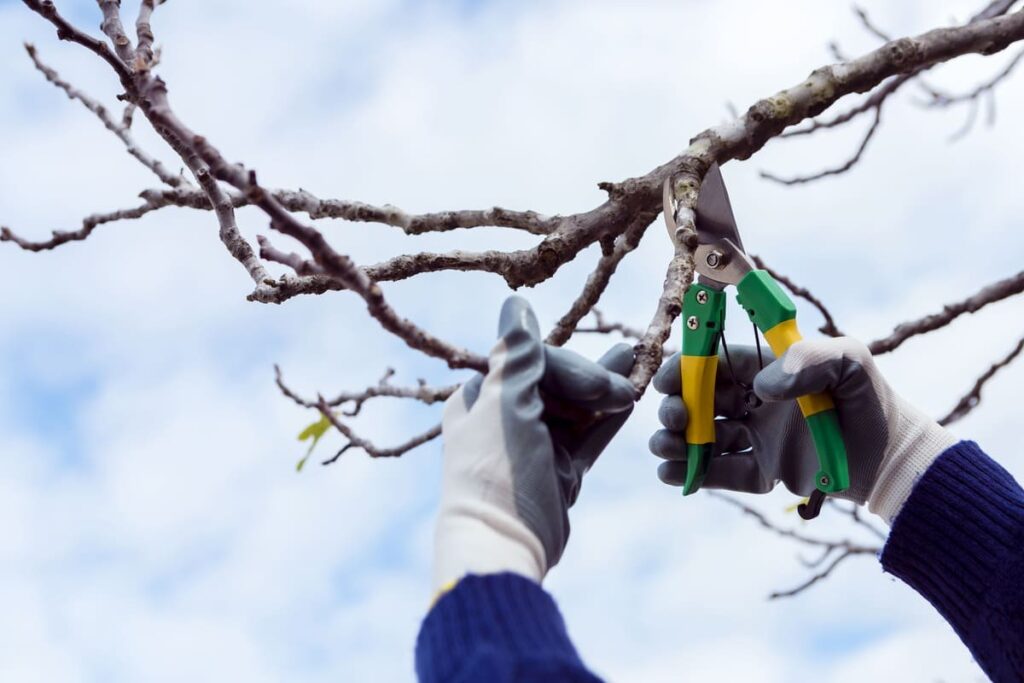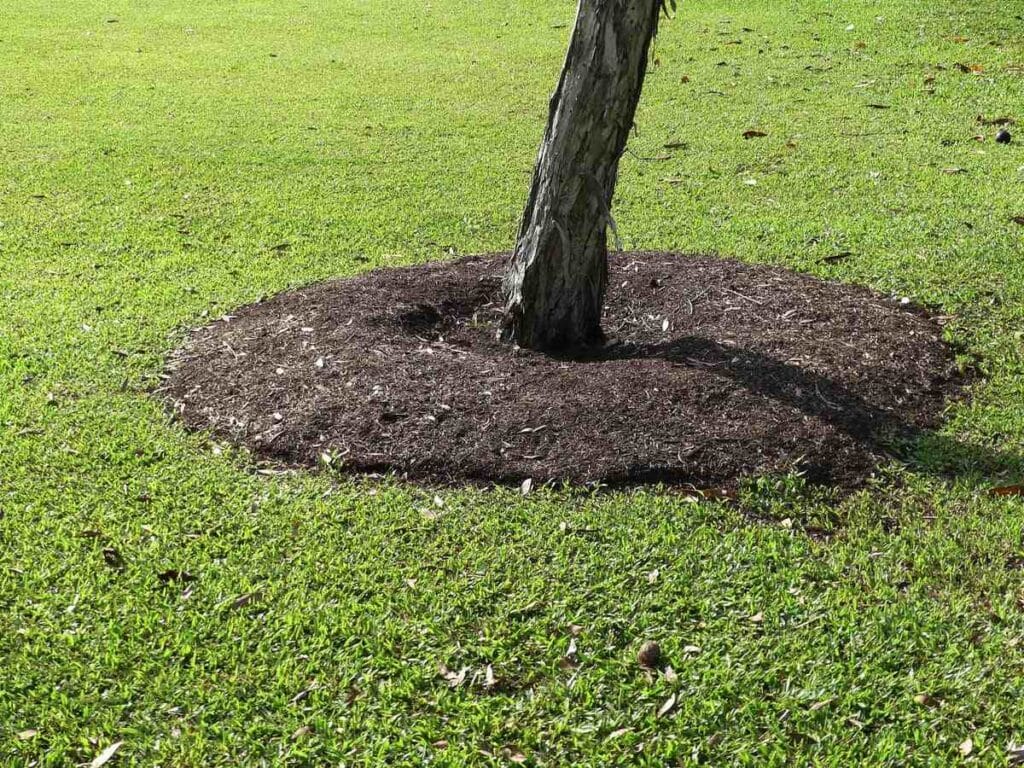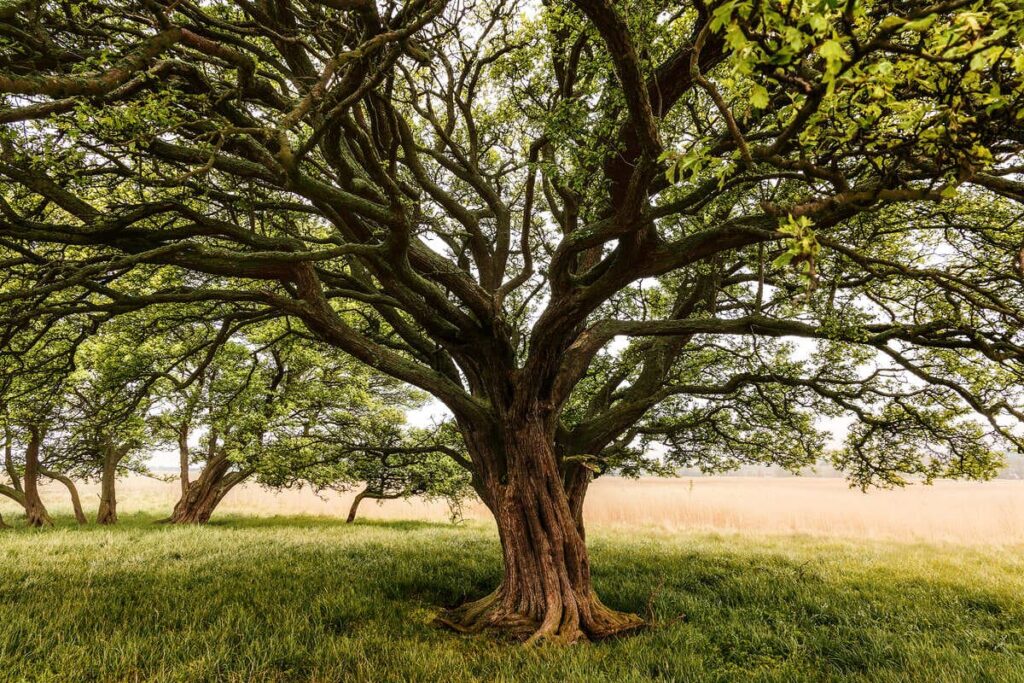
As winter blankets the landscape with snow and ice, it’s easy to assume that your trees are dormant and don’t require any attention. However, this couldn’t be further from the truth.
Winter is crucial for tree care, as cold weather, harsh winds, and ice can threaten your trees’ health and well-being.
In this comprehensive guide, we’ll explore the importance of winter tree care and provide you with valuable tips to ensure your trees thrive even in the coldest months.

As we said in our article about trees in winter, this is a rude season for your trees and very confusing for those homeowners who don’t have previous experience with trees.
Why? Because it is challenging to identify whether they are just dormant or truly about to die. So, :👉Click Here to Learn More About Trees in Winter👈 including details about their dormant stage and more.

Winter the ideal time for tree pruning. With the leaves gone and the tree’s structure exposed, it’s easier to identify dead or diseased branches that need to be removed.
Pruning during the dormant season also minimizes stress on the tree and reduces the risk of disease transmission, as many pathogens are less active in cold weather.
Be sure to use proper pruning techniques to avoid damaging your tree. Remove any branches that pose a safety hazard, such as those hanging over walkways or your home.

Mulching your trees in the winter is essential for several reasons. Firstly, a layer of mulch helps insulate the soil and tree roots, protecting them from extreme temperature fluctuations.
Secondly, it reduces moisture loss from the soil, ensuring that your trees receive adequate hydration during the dry winter months. Apply a 2-4 inch layer of organic mulch, such as wood chips or shredded leaves, around the base of your trees, leaving a gap near the trunk to prevent rot.
Contrary to popular belief, trees still require water during the winter, especially if the season is dry or if your trees are young and establishing their root systems.
Be cautious not to overwater, as excess moisture can lead to root rot in cold weather. Instead, aim to provide your trees with a deep, thorough watering once every few weeks if there hasn’t been adequate rainfall.

Winter can be challenging for wildlife, and hungry animals may turn to your trees for food. Consider wrapping the trunks with tree guards or using a repellent spray to protect your trees from browsing deer and other wildlife. This will deter animals from damaging the bark and leaves, helping your trees stay healthy.
One of the most significant threats to trees during the winter is the weight of ice and snow accumulation on branches. To prevent breakage and damage, gently shake off accumulated snow from the branches.
If ice has formed on your trees, avoid trying to break it off, as this can cause even more harm. Instead, allow the ice to melt naturally to minimize the risk of injury to your trees.
Winter is an excellent time to inspect your trees for signs of pests or diseases. Look for telltale symptoms such as discolored or oozing bark, unusual growths, or insect activity. If you notice any issues, consult a certified arborist for a proper diagnosis and treatment plan.
Strong winter winds can damage tree branches and desiccate foliage. If you live in an area prone to harsh winter winds, consider planting windbreaks or installing protective barriers around your trees.
This will help shield them from the brunt of the cold and reduce the risk of wind-related damage.
While keeping walkways and driveways safe during the winter is essential, avoid using deicing salts near your trees. These salts can harm tree roots and the surrounding soil, leading to long-term damage.
Instead, opt for alternative deicing methods, such as sand or non-salt deicers, that are less harmful to your trees.

Winter tree care is not a task to be overlooked. By following these tips and paying attention to your trees’ needs during the colder months, you can ensure their health and vitality year-round.
Remember that a well-maintained tree is a beautiful addition to your landscape and provides numerous environmental benefits.
So, if you need to ensure professional care for your trees this winter and enjoy the rewards of healthy, thriving trees in the spring and beyond, don’t hesitate to contact the tree specialists from Tree Care Professional; it will be a pleasure to help you.
Click on the Facebook icon to share this article!